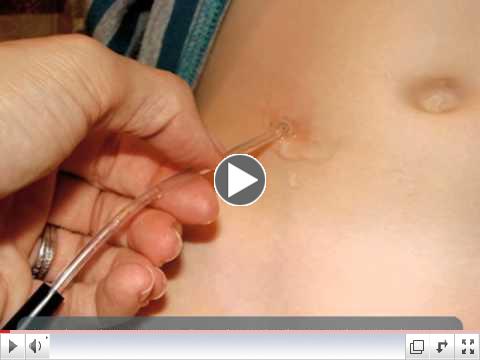Learning difficulties following isolated low-grade hemorrhage in premature infants.
| |
A study comparing premature to term control infants who experienced low-grade cerebral hemorrhage (Grade 2) on neurocognitive function at adolescence indicates that preterm adolescents have greater deficits in receptive vocabulary, verbal intelligence, phonemic fluency (separating words that sound similar) and cognitive and executive functions. These create a significant challenge to learning.
Acta Paediatrica
|
|
Shagrination (cobblestone appearance) of the tympanic membrane (TM) during acute otitis media (AOM).
| |
"Purulent otitis media (POM) is characterized by a bulging tympanic membrane (TM) with purulent fluid behind it". A cobblestone appearance of the TM (termed shagrination) with POM is quite common (35% of patients) and appears to mark the peak of TM bulging and the beginning of the TM's return to its normal position.
Journal of Pediatrics
|
|
"Boarding" in the Emergency Department (ED)- effects!
| |
Hospital crowding and delays in ward discharges may lead to patients being "boarded" in the ED.
A study of 1,016 patients "boarded" in the ED indicates that this is associated with an increased risk of "home medication" delays; delay in antibiotic administration and an increased risk of adverse events (but fewer delays in laboratory studies!). "Boarding" in the ED should be eliminated (Ed.).
The American Journal of Emergency Medicine
|
|
|
Download, print and pin this information on your office wall.
-This is a "Must Have" (Ed.)
|
|
Updates in Pediatrics is brought to you by:
| |
|
|
Long-term benefits of Antegrade Continence Enemas (ACE) in children.
ACE is a surgical procedure whereby the appendix (usually) is connected to a stoma in the abdominal wall allowing for daily flushing of the bowel (mostly for chronic idiopathic constipation (CIC) resistant to medical treatment, & anorectal malformations, spinal cord abnormalities and Hirschprung disease) through an inserted catheter.
A study of 203 of ACE procedures performed in children (median age 9 yrs.) with a variety of diagnoses, followed for 5.5 years indicates that 93% have a good result, with soiling being prevented in 75% of patients & 26% having their constipation resolved (81% of CIC patients no longer require bowel flushing).
Journal of Pediatric Surgery
|
Video Features (via YouTube)
 | |
ACE Procedure
|
|
 | |
My Cecostomy
|
|
|
Erythropoetin (EPO) administration- effect on cardiac arrest.
EPO is a glycoprotein produced by interstitial fibroblasts in the kidney (and in the liver during the perinatal period) that controls red cell production (as a cytokine signaling molecule for red cell precursors in the bone marrow). It has many other biological functions which include tissue protection, would healing, and brain/neuronal injury repair, etc.
A study examining the effects of rh-EPO (recombinant human Erythropoetin) administration in a pig model of prolonged (8 mins.) cardiac arrest/ventricular fibrillation (vs. a saline placebo) indicates that rh-EPO given immediately before the onset of chest compressions induces a higher rate of spontaneous circulation with improved 48 hour survival.
The American Journal of Emergency Medicine
|
Effectiveness of granisetron in controlling pediatric gastroenteritis (GE) - related vomiting after ED discharge.
Granisetron (available as a "generic" and "transdermal patch") is a serotonin 5-HT3 receptor antagonist (similar to Ondansetron-Zofran) used to prevent nausea and vomiting caused by cancer chemotherapy etc.
A study of 165 ED, 6 mth.-8 year old children with GE-related vomiting who failed initial oral rehydration, & were then given granisetron plus oral hydration, indicates that at 24 hours home follow-up, the drug failed to prevent subsequent GE-related vomiting.
The American Journal of Emergency Medicine
|
Blood culture time to positivity in febrile infants with bacteremia.
A multi-center, retrospective, cross-sectional evaluation of "blood culture time to positivity" in febrile infants with bacteremia, (<90 days of age), indicates that "time to culture positivity" (mean) is 15.41 hours. By 24 hours, 91% are positive and at 36 hours and 48 hours, 96% and 99% respectively become positive.
"Inpatient observation of febrile infants for more than 24 hours may be unnecessary in most infants."
JAMA Pediatrics
|
Underwriting Opportunities
|
With a circulation of over 5,000, Updates in Pediatrics offers an excellent opportunity to promote your brand at affordable rates.
|
|
|